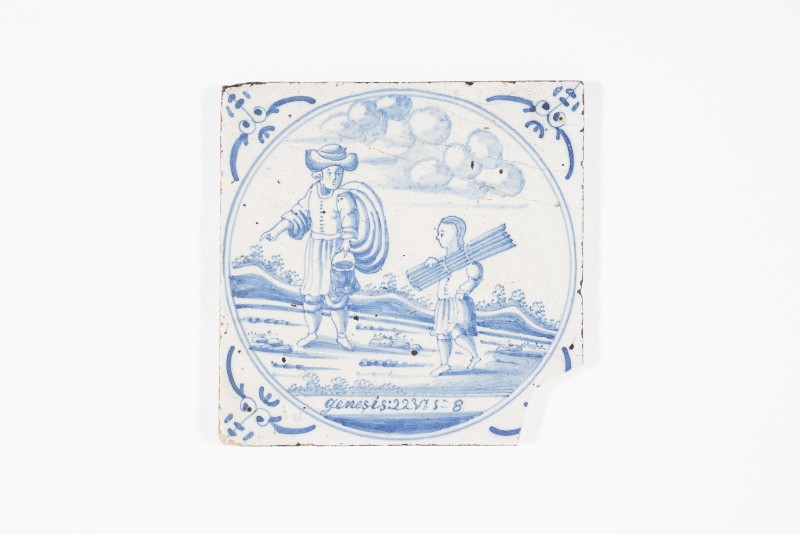Quadratische Fliese mit einer von zwei konzentrischen Kreisen eingefassten Darstellung von Abraham und Isaak in leicht hügeliger Landschaft: links Abraham mit Hut und Umhang, einen Feuertopf in der linken Hand haltend. Rechts Isaak, ein Holzbündel für das Brandopfer auf der linken Schulter tragend. Der Himmel mit Wolken. In den Ecken Ochsenkopfmotive. Am unteren Rand die Inschrift: „Genesis: 22 V = 5-8“.
Die rechte untere Ecke ausgebrochen, kleine Glasurabplatzungen an den Kanten.
Ankauf von Rudolf Thalacker, Leipzig, 1911
en

